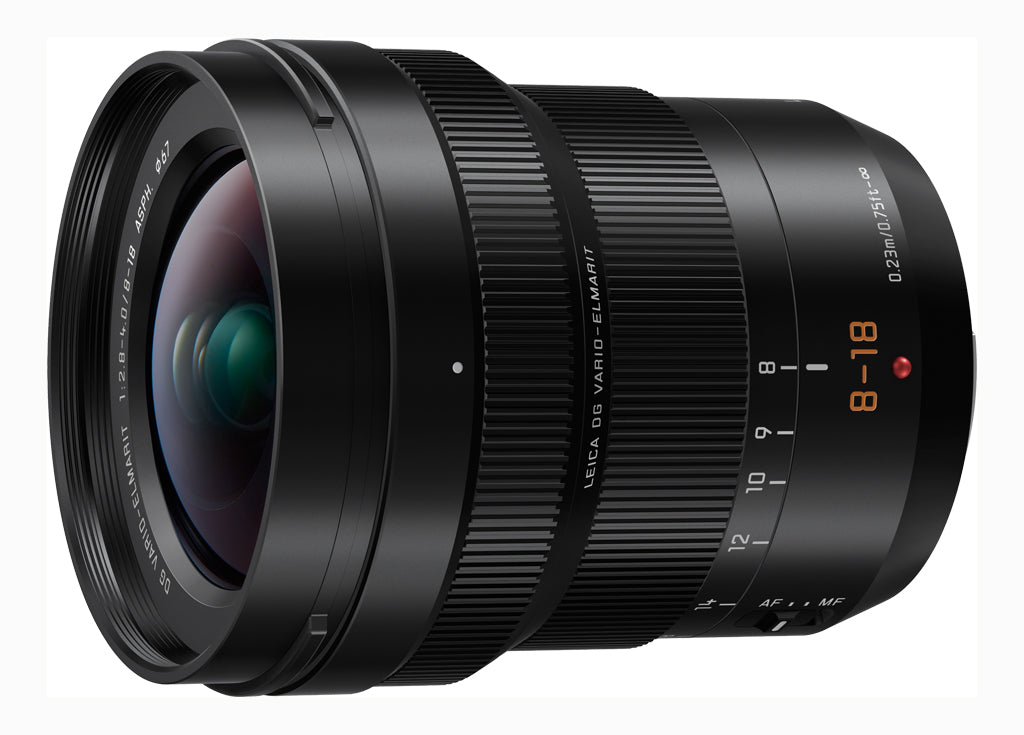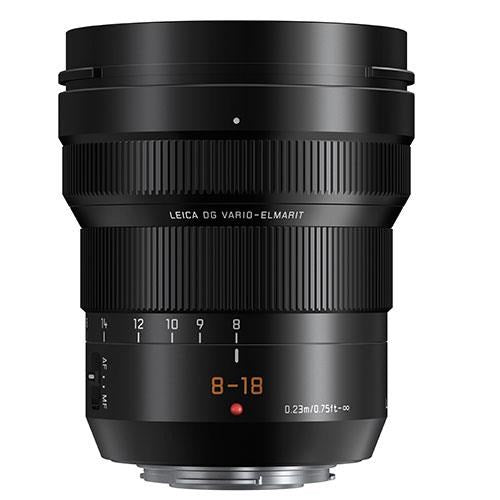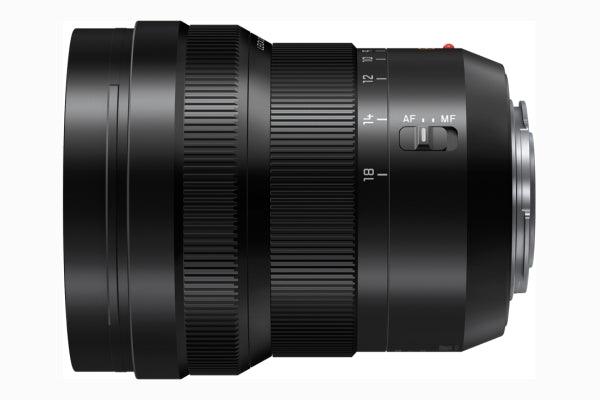Product Description
Panasonic 8-18mm f/2.8-4 ASPH Lens H-E08018 Leica DG Vario-Elmarit: Ultra-Wide Zoom with Leica Precision
The Panasonic 8-18mm f/2.8-4 ASPH Lens H-E08018 from the Leica DG Vario-Elmarit series is a versatile, high-performance zoom lens designed for Micro Four Thirds mount cameras. Offering a wide focal range from 8mm ultra-wide to 18mm (equivalent to 16-36mm on a 35mm camera), this lens is ideal for landscape photography, architectural shots, and creative wide-angle video recording. Compact yet powerful, it delivers superb image quality, enhanced video capabilities, and rugged durability for professionals who need performance in all environments.
Key Features:
- 8-18mm Focal Length: Ultra-wide to versatile zoom (16-36mm equivalent on 35mm cameras)
- Bright f/2.8-4 Aperture: Ideal for low-light situations, including night photography
- Rugged Design: Dust, splash, and freezeproof down to -10°C
- Advanced Optical Design: 15 elements in 10 groups, including aspherical and ED elements for high resolution and reduced aberrations
- 67mm Filter Compatibility: Supports ND or PL filters for added creative flexibility
- High-Speed Contrast AF: Optimized for fast and precise autofocus with max 240 fps sensor drive
- Smooth Video Performance: Silent inner focus drive and micro-step aperture control for seamless transitions
Exceptional Performance for Photo and Video
The Panasonic 8-18mm f/2.8-4 is engineered to deliver outstanding performance for both still photography and videography. The f/2.8-4 aperture range ensures excellent light capture, making this lens ideal for low-light shooting, such as capturing night scenes or starry skies. Whether you’re working with ultra-wide angles or zooming in for tighter shots, this lens provides consistent, high-quality results throughout its entire range.
Advanced Optics for Superior Image Quality
Featuring 15 elements in 10 groups, the lens construction includes aspherical, ED (Extra-Low Dispersion), and UHR (Ultra High Refractive Index) lenses to minimize chromatic aberrations, distortion, and fringing. This optical design ensures sharpness, clarity, and high contrast from the center to the edges of the frame, delivering stunning image quality in every shot.
Rugged, Weather-Sealed Design
Built to handle the demands of professional photographers and videographers, the Panasonic 8-18mm f/2.8-4 features a dust, splash, and freezeproof construction, ensuring reliable performance in harsh environments. Whether you’re shooting in extreme cold or challenging weather conditions, this lens will withstand the elements while maintaining excellent functionality.
Optimized for High-Speed Autofocus
With a sensor drive of up to 240 fps, this lens ensures fast, precise focusing, ideal for cameras with high-speed Contrast AF systems. This feature is particularly beneficial for fast-moving subjects or dynamic video recording, where quick and accurate focus is essential for sharp results.
Professional Video Capabilities
The lens excels in video recording, thanks to its silent inner focus drive and micro-step aperture control. These features allow for smooth transitions during brightness changes, reducing wobbling and ensuring consistent, sharp footage while zooming or panning. The barycentric stability of the optical design minimizes image shifts during zooming, and the AF tracking performance is enhanced, making it a powerful tool for professional videographers.
For full specifications click Here
Payment & Security
Your payment information is processed securely. We do not store credit card details nor have access to your credit card information.





















